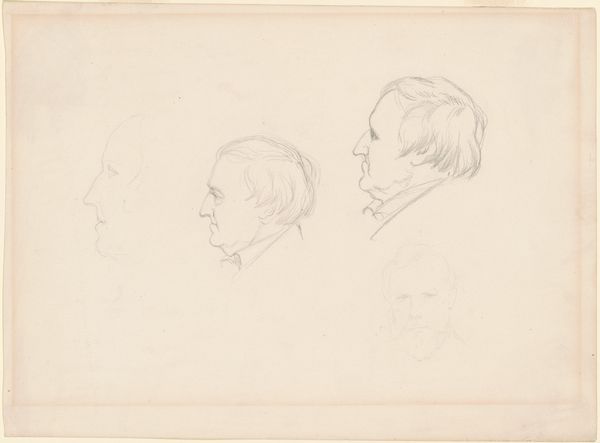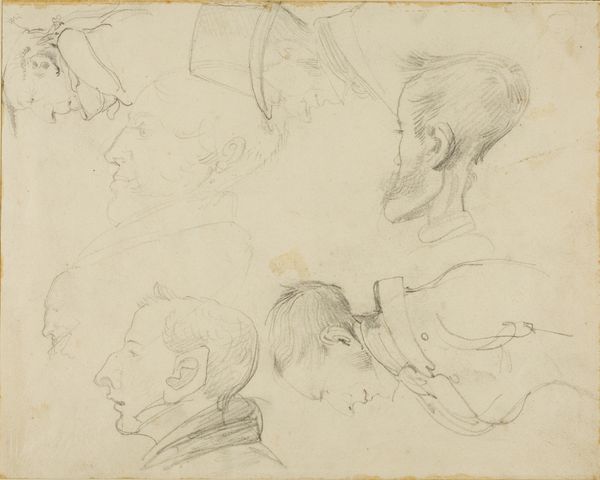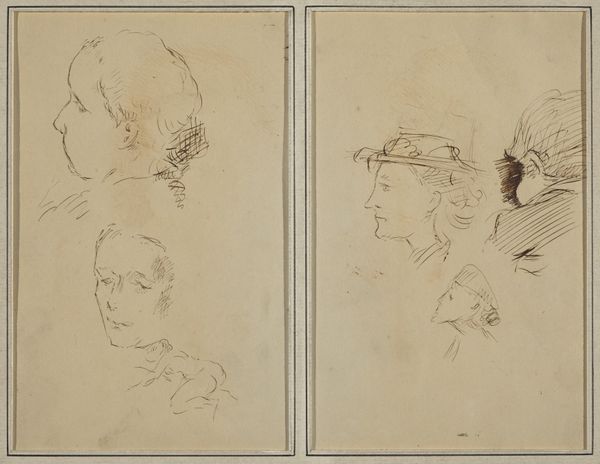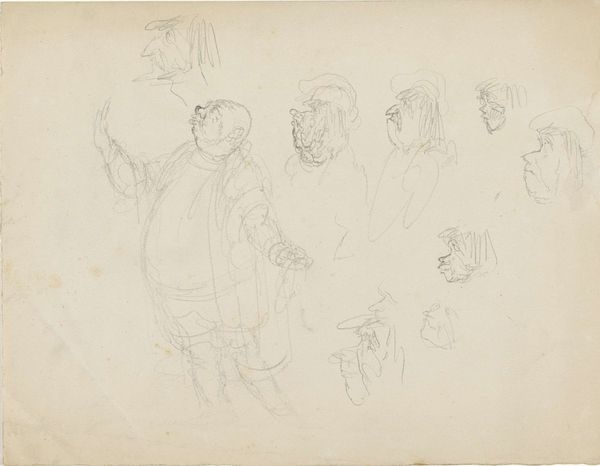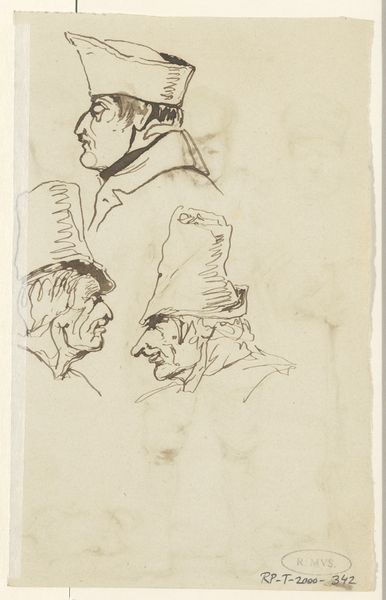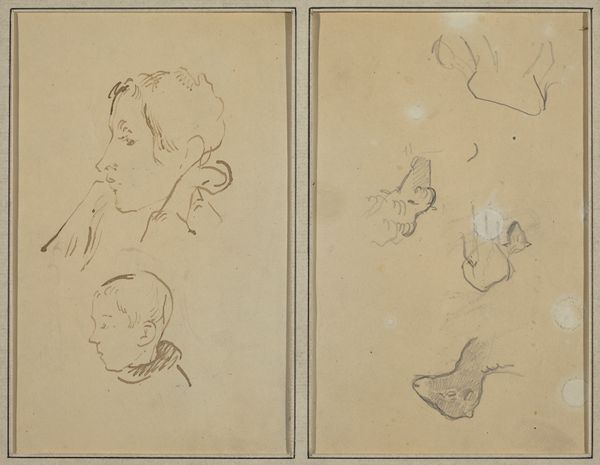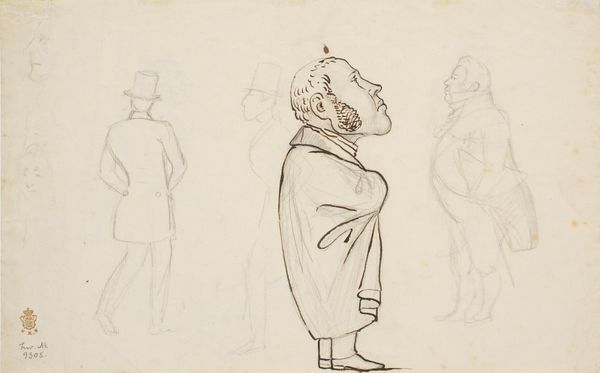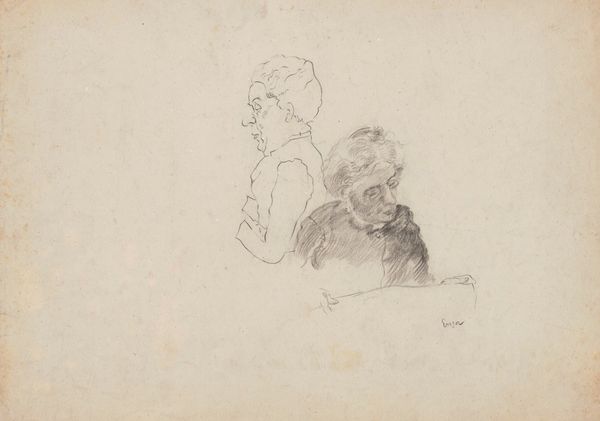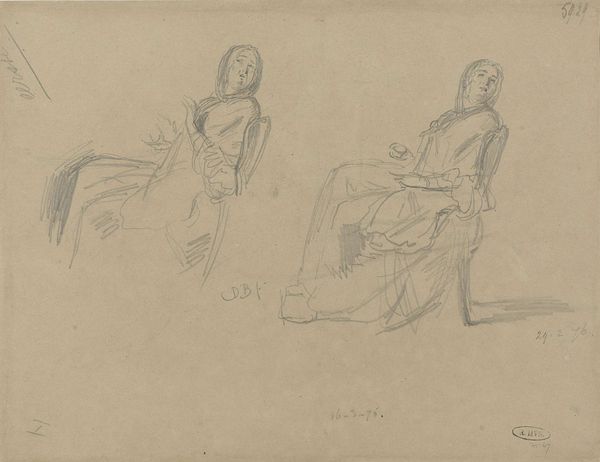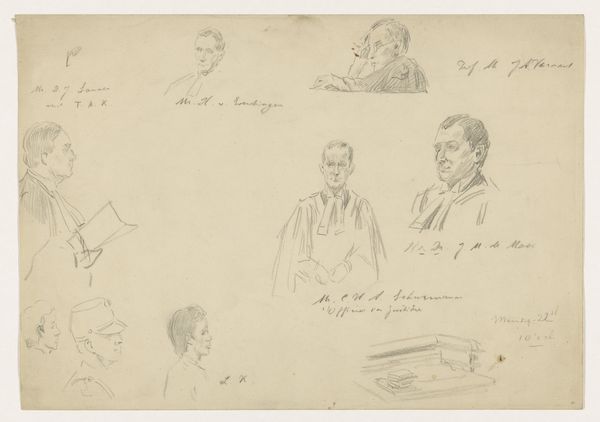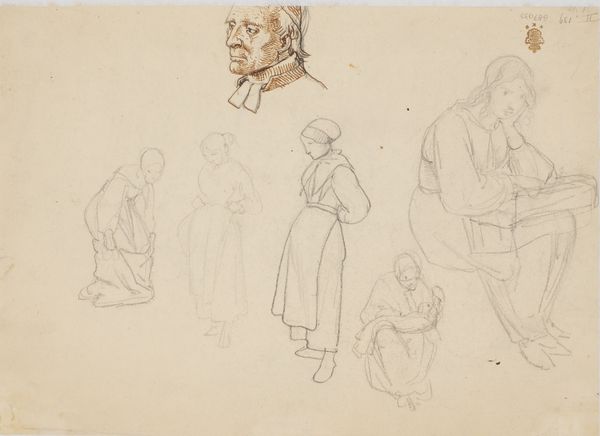
drawing, print, paper, pencil, graphite
#
portrait
#
pencil drawn
#
drawing
# print
#
caricature
#
pencil sketch
#
paper
#
romanticism
#
pencil
#
graphite
#
portrait drawing
Dimensions: 224 × 285 mm
Copyright: Public Domain
Curator: Looking at this drawing, what captures your attention immediately? Editor: There's a real theatrical quality. The way these faces emerge so expressively feels almost like costume design— exaggerated features, like masks of different character types. Curator: You’ve touched on the intent behind Théodore Géricault’s "Sheet of Caricatures," crafted circa 1818-1819. This drawing, rendered in graphite pencil on paper, really epitomizes the biting social commentary of the era. Editor: The exaggerated features, that nose and jawline particularly, feel symbolic, as if we're seeing distilled archetypes of different personalities or even classes. Is he drawing on earlier traditions of caricature? Curator: Absolutely. Caricature in the Romantic era often became a potent tool for social critique. Géricault employs it here to dismantle the pompous facade of the bourgeoisie after the Napoleonic era. He dissects their aspirations and pretensions, revealing them as fundamentally flawed. We can ask what purpose the lone body suit in the background serves? Editor: Ah, a discarded skin. Or perhaps a stand-in, a symbol for something missing. Empty formality. Does that relate to anything else he created? Curator: Yes, in some of his lithographs depicting marginalized groups, particularly after his famous “Raft of the Medusa,” he continued his pursuit of exploring the vulnerabilities inherent within human experience, questioning societal norms and hierarchies through his art. Editor: I'm left wondering what continuities persisted into the work of other artists? In art history, you can trace an almost direct line through Grosz to the great satirists of today, finding this persistent theme. Curator: Indeed. This sketch is a fascinating entry point into the socio-political anxieties following the Napoleonic wars, underscoring art's function as a powerful means to disrupt, comment and challenge power structures. Editor: Thank you, it gives me an invitation to think more deeply about these artistic choices and the artist's purpose.
Comments
No comments
Be the first to comment and join the conversation on the ultimate creative platform.
